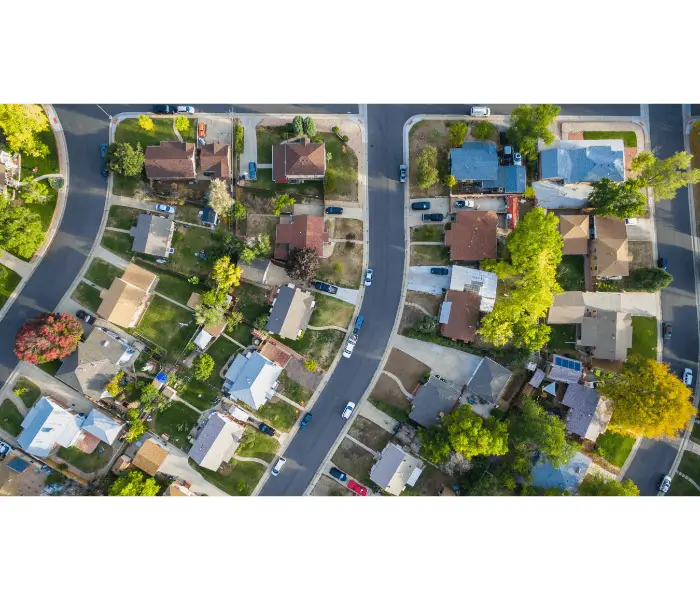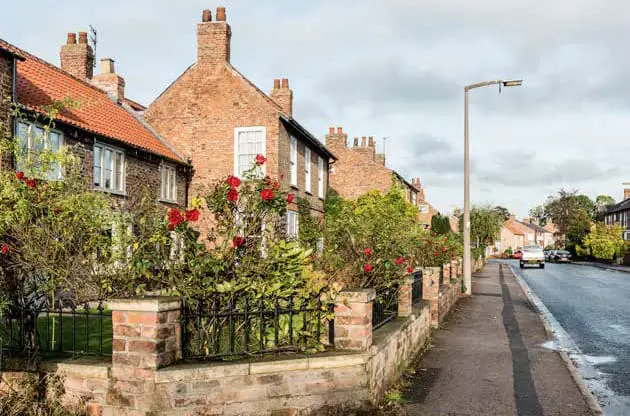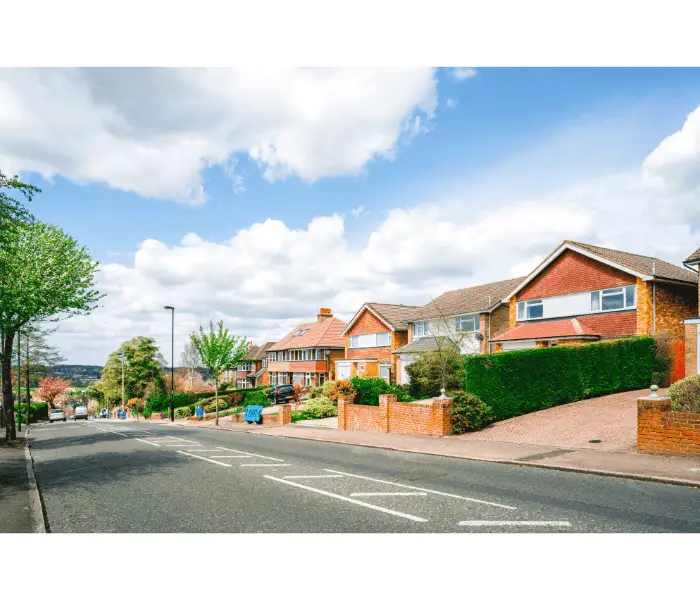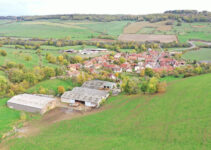Say the word ‘village’ and most of us will get a clear picture in our mind’s eye. Villages, to most of us in Britain, conjure the image of quaint thatched cottages surrounding a village green, with a pub and a church nestled close by to cater for all life’s occasions.
What’s the difference between a village and neighbourhood? Neighbourhoods are a little more vague. But when we consider the meaning of the word, we generally think of our own area – our neighbours and local amenities – whether we live in a rural or urban area. And that’s really what the main difference between a village and a neighbourhood comes down to – geography.
A neighbourhood can be anywhere and a village has some specific restrictions about where it can be.
So let’s consider what defines a village from a neighbourhood.

What is Considered a Neighbourhood?
By definition, a neighbourhood can be anywhere. But it is specific to an area. So we can consider a district or area a synonym of the term neighbourhood.
A neighbourhood includes:
- the residents
- the houses
- natural features
- man-made structures
- amenities
- services
And all these features of a particular place are critical to a neighbourhood – especially when they interconnect.
But the term is also quite elastic and depends on context. Let’s say you were a person looking to buy a house in a new place.
You might ask the estate agent what the neighbourhood was like. Their reply would be completely dependent on location.

Village vs Neighborhood
Let’s say you’re considering a cottage in a rural location, the estate agent might say that your protentional neighbourhood is secluded or off the beaten track.
But they might include the natural landscape features such as walks or beaches, transport links and distances to amenities.
Your village centre might be a mile or so away, so your ‘neighbourhood’ might stretch to quite a wide area.
But if your potential new home is in a village or town locale, you might get a very different reply. In urban locations where space is at a premium, you might be informed about the very closest amenities and what the residential area is like specific to the street.
It might include schools, shops, leisure centres, libraries, support systems and all the features that might apply to urban living. For those living in towns and cities, your neighbourhood might strangely seem a little smaller than rural dwellers.
So how does that differ from what defines a village?
What Classifies as a Village?
Would it surprise you to learn that there is no official classification of what a village is? A village is defined mostly by tradition and popular agreement.
But if you ask most people they will tell you that a village is a small rural community very similar to the image we described at the beginning.
However, as long as the community does not have a Town Council, a Town Hall or a license to hold a market then it can claim to be a village.

Difference Between Village and Community
By popular tradition, a village should be a single community that is surrounded by a ‘green buffer’. That is a green belt, such as agricultural land, moor, fen, forest or coast.
And traditionally, a village was based around a one-church congregation. But as parishes have now expanded to include wider areas and multiple churches, the nature of this definition of a village has changed too.
Most people expect a village to have a pub, a village green and possibly a school or parish hall. They would also expect the shops, services and amnesties to be more restricted.
There may be a small village shop or post office, or perhaps a bakery and a library.
But this expectation doesn’t include the many very large communities that still cling to the village title. With so many people moving to urban areas for work, cities and towns have expanded, swallowing up local villages in the process.
And because many of these villages still retain some green land on two or three sides of their parish boundaries, their claim to village status can’t really be denied.
And the grey area about what classifies as a village isn’t helped by a list kept by Parliament. According to the Commons Library, there are only 6,116 villages in Great Britain.
But this number only includes communities with fewer than 7,500 inhabitants and as many villages are significantly larger than this, many communities would (and do) challenge the Commons’ list.
Who would have thought that the term village could be so controversial?
However, whether you live in a village or not, we hope your neighbourhood is friendly and supportive or that it delights you. Because, like the old saying, wherever your home might be, it is where the heart is.


